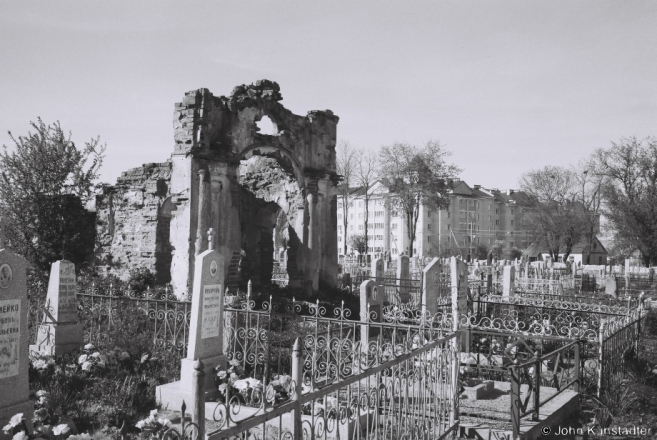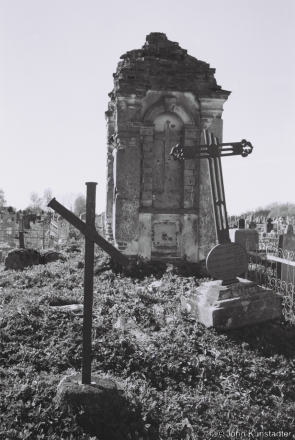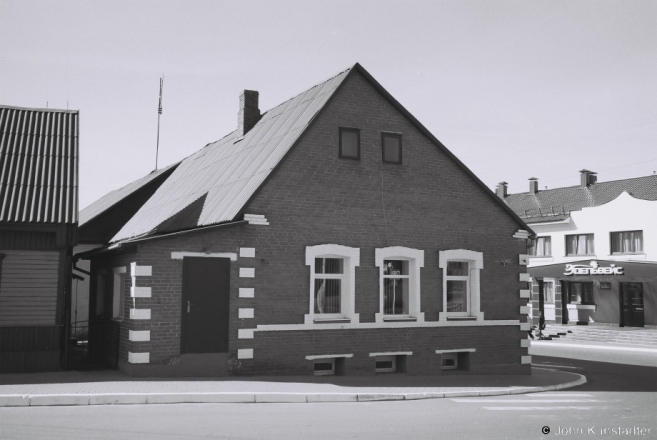Expedition to the concentration of ethnotoponyms (ethnically-, tribally- or geographically-related toponyms) around the district center of Ljakhavichy (Ляхавічы) in western Belarus (part VI): Ljakhavichy (Ляхавічы).
Ljakhavichy, a district center of 11,000 people in Brest Region, derives its name from the word Ljakh (Лях), meaning Pole: Lech was the name of the legendary founder of the Polish nation. The many place-names across Belarus containing variations on the name Ljakh (Lech) attest to the eastward migration and settlement of Poles in the Middle Ages.
Ljakhavichy’s renowned and long-impregnable fortress was dismantled ignominiously in the early 19th century under Russian imperial occupation. Like most other cities in the region, Ljakhavichy had a large Jewish population and the city’s main square retains several 19th-century buildings of typical Jewish masonry construction. The Soviet regime destroyed or desecrated two Roman Catholic churches in Ljakhavichy; since the early 1990s new Roman Catholic and Orthodox churches have been built.
Вандроўка па этнатапонімах вакол Ляхавічаў (частка VІ): Ятвезь, Вялікая Лотва, Літва, Туркі, Сакуны, Ляхавічы, Русінавічы, Жомайдзь (Клецкі р.), Мазуркі, Цыгань, Літоўка, Русіно.
Mausoleum of the Saltan family (1830s), Ljakhavichy cemetery. Часоўня Салтанаў (1830 гг.), ляхавіцкія могілкі.
Mausoleum (19th century), Ljakhavichy cemetery. Часоўня (19-а стаг.), ляхавіцкія могілкі.
One of a series of formerly Jewish-owned 19th-century brick buildings lining the city’s main square.


